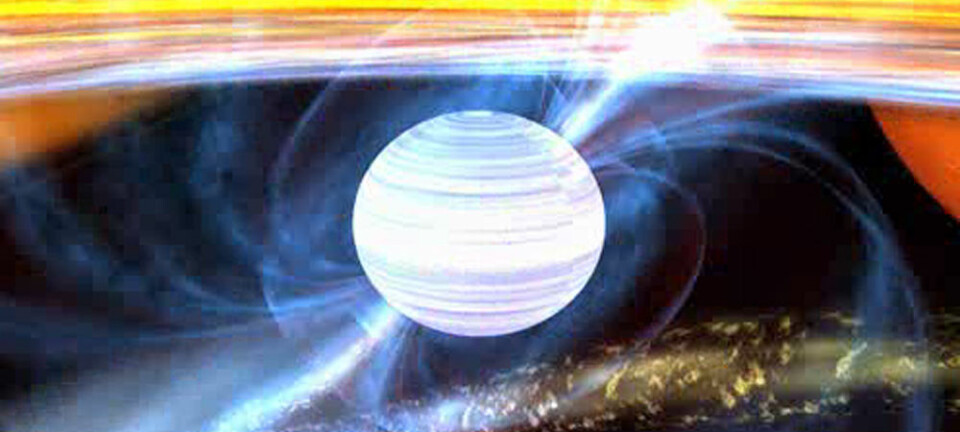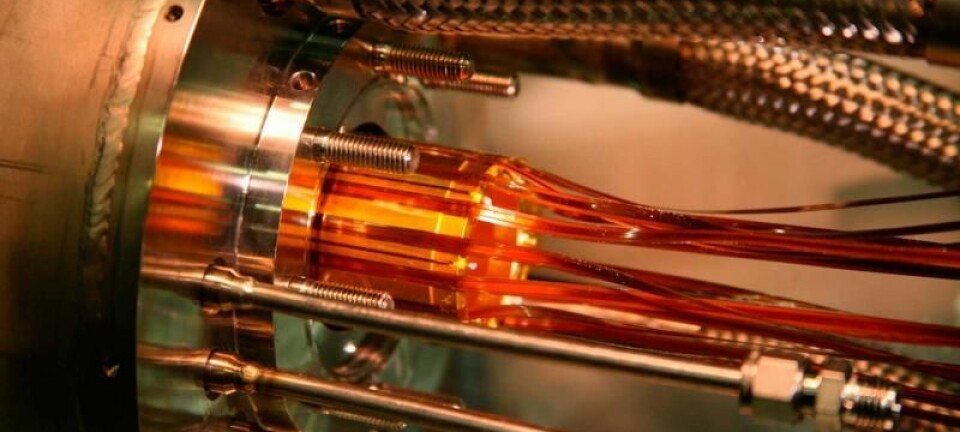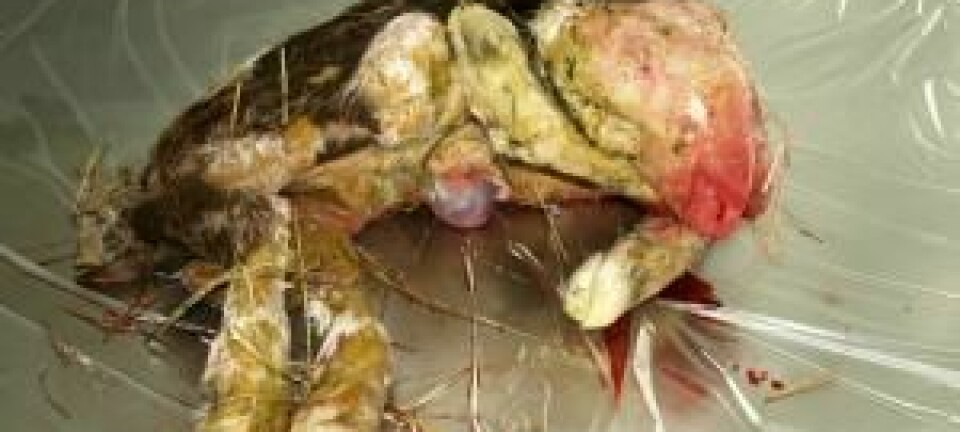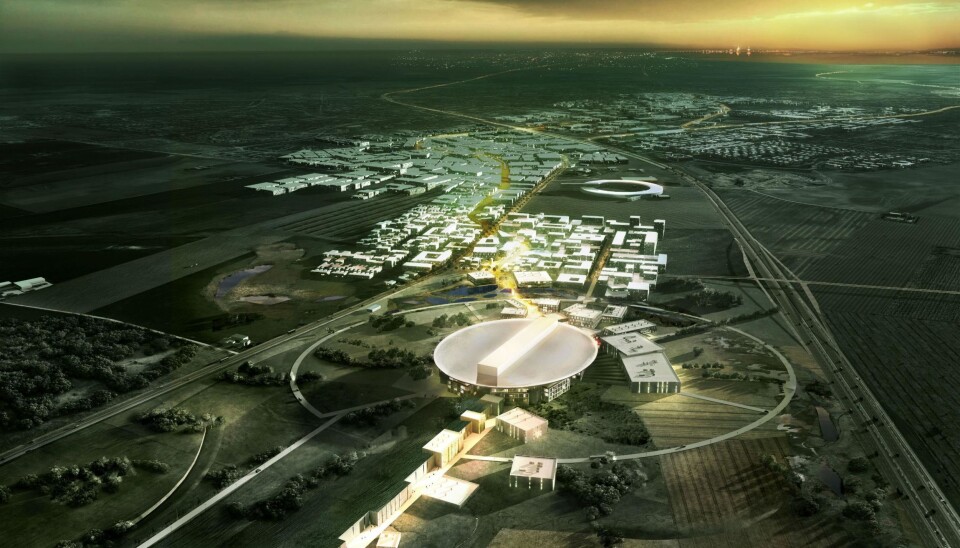
New state-of-the-art research facility is being build in Scandinavia
Construction of the world's most advanced neutron scattering facility is finally to begin after ten years of preparation.
After ten years of preparation, construction of the world's most advanced neutron ’microscope’ is finally about to begin.
The gigantic facility will constitute an entirely new research centre, the European Spallation Source (ESS). It will have a permanent staff of 400-500 and receive some 2000-5000 visiting researchers every year.
Denmark is co-hosting the research center with Sweden and will be investing almost 300 million euros in the project,
"It’ll be Denmark's biggest investment in research infrastructure. The ESS will be a world leader in its field and will attract talented scientists and students from all over the world," says Professor Henning Friis Poulsen from the Institute of Physics at Denmark's Technical University (DTU).
Multi-billion project
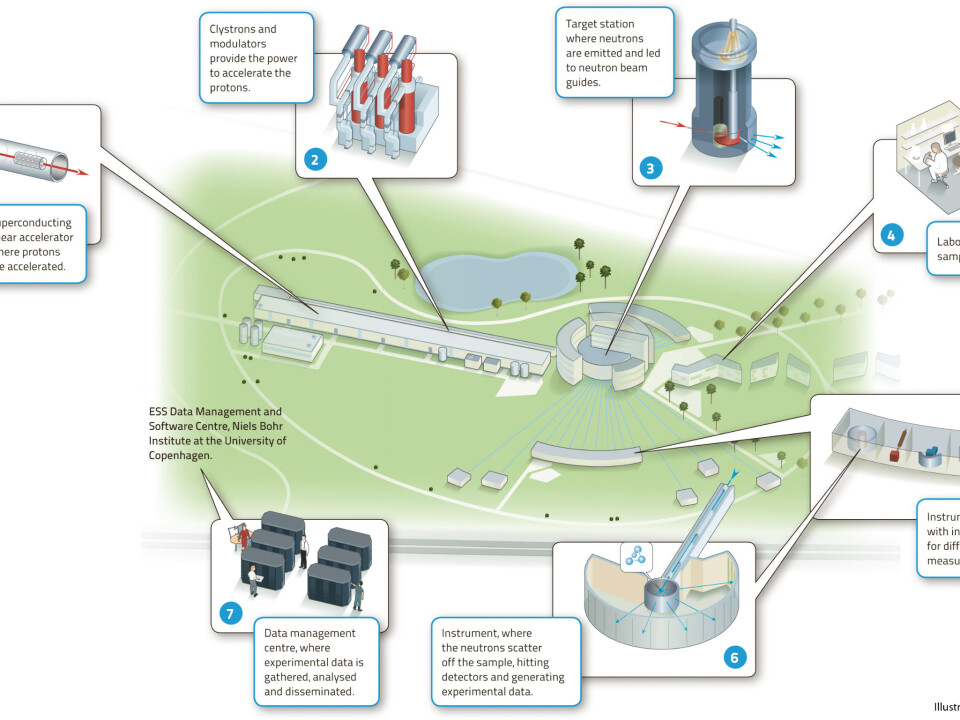
Poulsen is one of the scientists who have been working for years to realise the dream of having a state-of-the-art neutron scattering facility.
The final financing details fell into place recently when Germany, as the last major European country, decided to support the project. The neutron facility will ultimately cost 1.9 billion euros of which Denmark will contribute 12.5 per cent.
"This is a fantastic Christmas present for us as scientists, but also a huge opportunity for Denmark. It's the equivalent of being selected to host the World Cup on our field of science."
"The difference, though, is that this World Cup won't just last three weeks but the next 30-40 years. This is an incredible opportunity that will benefit academics and industry alike," says Poulsen, who is chairman of an association of Danish scientists, Danscatt.
A world leading facility
Danscatt helps, among other things, Danish scientists want to carry out experiments on advanced neutron installations. Today, neutron researchers must travel to Oak Ridge in the United States or Grenoble in France to do the most advanced experiments.
However, when finished the European Spallation Source (ESS) will, according to Poulsen, be the best of its kind in the world and located right in Denmark's back yard -- in the southern Swedish university city Lund.
"An extremely broad group of researchers will benefit from the facility. It will cater for everything from medicine and biological materials to research into magnetism or battery technologies."
"One of the societal challenges the ESS can help to solve is how we can develop energy technologies that are more efficient and which emit less CO2," Poulsen explains.
Reminiscent of x-rays
Poulsen explains that the neutron installation can be compared to an x-ray apparatus, which can see through materials.
But instead of using x-rays, the neutron facility bombards materials with neutrons -- that is to say particles inside the nuclei of atoms.
Using the neutrons the researchers will be able to get detailed picture of the structure of a material right down to atomic level, so the installation functions as a super-powerful microscope that can reveal even the minutest secrets of different materials.
Minister: this will provide Denmark with new openings
The Danish investment of almost two billion kroner in the neutron scattering installation is slightly more than the DKK 1.5 billion earmarked by the government for "goal-oriented improvements to our welfare society" in the nation's 2015 budget.
Education and research Minister Sofie Carsten Nielsen believes, however, that taxpayers' expenditure on the ESS is well spent.
"The ESS opens a series of new possibilities for Denmark. It will invigorate research, attract the best scientists, provide employment for a highly educated workforce and attract foreign knowledge-based companies. Hosting the project can give Danish research a tremendous boost and invigorate development in the entire Sound Region and Denmark," writes Nielsen in a press release.
Sweden to pay most of the neutron microscope bill
In all, 17 European countries have joined forces to establish and fund the ESS installation. Sweden is the main investor in the project and will pay 35 per cent of its 1.9 billion euro price tag.
The ESS is expected to go into operation in 2019, although the research centre will not be entirely complete until 2025.
Scientists and industry will spend the intervening period developing and building the cutting edge instruments to be located in Lund.
An association of scientists from Aarhus University, the University of Copenhagen, DTU and Switzerland have joined forces to bid for the task of building several of the instruments.
"As far as we Danes are concerned, we hope to be deeply involved in building three of the 22 instruments for the ESS. We are a large group of Danish scientists who have joined forces with our friends from Switzerland and put in a bid to take on the task," Poulsen explains.
How a neutron scattering facility works
But what instruments are to be built for the ESS -- and how do they work?
Poulsen explains that the facility's primary function will be to produce neutrons. The neutrons are hidden away in the nucleus of an atom, so the first step is for the ESS facility to extract the neutrons from the nucleus.
"The neutrons are produced by accelerating particles to a high velocity and firing them at a neutron source, thus releasing the neutrons. The good thing is that what we have here is not a reactor, so we won't have the same kinds of problems with radioactivity as we know them from nuclear reactors," says ‘Poulsen.
Hurtle down hundred-meter-long tubes
When the neutrons have been 'set free' from their atomic nuclei they are sent down a tube up to several hundred metres long.
They then reach the part of the process where the neutrons are used as a 'microscope'. This is achieved by firing the neutrons into the material you want to examine.
"The neutrons will more often than not penetrate materials, and this can be exploited to derive information about the structure of the material. Detectors -- often several hundred of them -- are set up behind the material to be examined. They measure, for instance, by how much the signal from the neutrons has been weakened by bypassing through the material and how much the neutrons have spread," says Poulsen.
Particularly good magnetism and bio-molecules
On the basis of the information provided by the detectors, the scientists will be able, by means of analysis, to obtain a whole lot of details about the material they are examining.
The technique is reminiscent of the use of x-rays to examine the structure of materials, although unlike x-rays, neutrons are particularly suitable when it comes to examining biological materials and magnetic qualities," Poulsen explains.
"One way of explaining the difference between using neutrons and x-rays is to take an engine cylinder block as an example. If you x-ray a cylinder block you will see the steel, whereas the neutrons penetrate the cylinder block, providing an image of the diesel or water vapours inside it. The neutrons are really good at showing soft and biological materials," Poulsen continues.
How to gain access to the ESS
When the ESS has been completed it will be available to scientists from all over the world.
According to Poulsen, each individual research project will be allocated a certain period during which they will have use of the facility.
"If you are a university researcher and want to make use of the facility you must submit an application which will be assessed by a panel of scientists. They will select the applications that look most exciting and appear to have the potential to make the greatest breakthrough. So if your application is good enough you will be entered in the calendar and will have an intense period of time during which you will do your experiments," explains Poulsen, adding that commercial enterprises will also have the opportunity to rent the facility.
Apart from the actual experimental instruments to be located in Lund, the ESS will also have an analysis centre to be located in Copenhagen - the ESS Data Management and Software Center.
------------
Read the original story in Danish on Videnskab.dk
Translated by: Hugh Matthews
